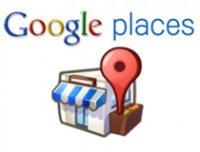
If you are a business owner with a local presence, you are sure to find this 60 minute interview invaluable. Below is a summary of what was discussed. To listen the entire show, you can download it for free on iTunes at https://itunes.apple.com/us/podcast/seo-101/id280183060
Important note: These interview highlights have been paraphrased unless quotes are used.
Ross – Mike Blumenthal has spent the last 6 years studying Google Places; how it works and how it affects the entire local ecosystem.
John – He is known as Professor Maps because he literally knows everything there is to know about this. I am really excited to pick his brain today.
John – We have a lot to talk about with Local. Just in the past couple of days, Google has changed the way they are displaying reviews. Can you try and explain this for us Mike? What sort of ramifications will this have?
Mike – Just for a little bit of background, in the last few weeks there’s been a lot of disruption noticed in the forums and by individual Places holders in Google Places. Usually when you see this kind of activity, it’s a sign that something is going on under the hood and yesterday Google rolled out a radical redesign of the Places page. As part of that, they dramatically de-emphasized third party reviews both on the places page but also on the names local search results from the main search. So previously if you had 100 reviews from a third party sources and 2 reviews from Google, it would have shown as having 102 reviews, now it is showing you as having 2 reviews. (Note from Ross: here are some more examples of the Google Places changes)
John – Just to be clear, they are still counting all the reviews but they just change what they display. Is that right?
Mike – One presumes they are counting this information. As far as we can tell, there have been no changes in rankings. This change has so far just reduced the visibility of the third party reviews. Small business that have not had a diversified review plan in place, they’re going to see some skewing of the visual results and I think at some point it is going to impact traffic to review sites. Companies that are in the review management business, the value of their services is going to plummet.
John – I had a friend call me today and he was all excited because he just discovered Demand Force and I said to him “well you might have missed the boat on that one.”
Mike – Certainly Demand Force and similar services have a place because they formalize review requests of customers. I think that’s an important service but I don’t think a small business should rely on them exclusively. That should be part of a bigger plan.
Ross – I’ve never heard of Demand Force. Can you tell us a little bit about it?
Mike – Demand Force is a company that primarily works in the dental field. They do a lot of practice management. One of the things they do is appointment follow ups with the client on your behalf and if the review is negative then they allow you to interact with the customer for the next two weeks and hopefully resolve the dispute. If not, then the review will still be published but it might be changed in that time frame.
Ross – There was a time when getting a review on Google Places was less effective than getting one from third party sources. Is this still the case or has that changed with this update?
Mike – To me a review is effective if a customer sees it. The value of the review is in the credibility it provides. In terms of rankings, I don’t think Google values their reviews more than others. Google is looking to return the most accurate local results. They always look at the sum total of the information they have access to.
Ross – Do you think Google Places is setting itself up to get more of the review traffic?
Mike – Absolutely. You can see with the visual changes in Places. They’ve done a redesign to match their new black bar and red buttons to match Google+.
John – I think the visual changes are no coincidence that they are happening at the same time Google+ is happening. When they launch the business pages on Google +, they are going to tie in the Google Places pages.
Mike – They did mention in one of their posts that they are going to take the information that is buried in Google Places and make it more visible throughout all of their platforms. That information could be reviews, it could be photos, or it could be coupons. We think they are going to be leveraging this information much more broadly.
John – with Google, it could be all of the above.
John – Can you help our listeners understand the difference between the blended local search and the one box search results? How and why are they different because I don’t think enough people understand?
Mike – So most of your listeners are familiar that there is an algorithm driving the organic web page results based on relevance and prominence of that particular page heavily focused on linking etc.. . Well there is an algorithm called location prominence that focuses on the popularity of a given business and place. This algorithm looks at online proxies that help determine the popularity of the business. Last October Google really mixed it up and rolled out blended results which takes this local algorithm and this local information and merges it with the organic results and blends it visually/ algorithmically.
John – So are the blended results becoming more prominent?
Mike – We thought originally Google would shift heavily to the blended search but they haven’t yet. There is incredible variety in how and when they produce one versus the other.
John – I personally like the blended results and for small businesses I think they are probably going to be more effective for them if they have the right content on their sites. But I could be wrong. What do you think Mike?
Mike – I think that you have to cover your bases and we don’t really know how users response to the Google displays. There are the only people that really know the answer to that. So I don’t really know. My preferences are of little importance in the face of Google.
John – What are the steps that small businesses need to do in order to protect themselves from spam?
Mike – They have to do two things. They have to take care of their customers and develop an integrated presence on the web that doesn’t rely too heavily on Google or Facebook or any place else. It has to rely primarily on thing that they can control. They have to invest in the long haul on entities that you can control like their website and their blog. In the end they have to hope that the search engines get it right and give them the exposure they deserve.
John – What are some of the tools that you use when are monitoring local?
Mike – Local is about place. Place is about name, address, phone number. Google obtains data from tons of sources and pulls the data it finds most relevant to show it in the search results. If your name, phone number, address are not the same in every place this will work against you. Instead of worrying about tools, you have to worry about process and the process to me is that you want to be sure that you pick a consistent business name. Changing these will dog your listing forever. Make sure your contact information is consistent in all the junctures of the internet including: primary list suppliers, info USA, LocalEase, Google, Yelp, Bing, and Yahoo. To me, it is crucial that you follow these basics.
Ross – What about people with home offices? They don’t want people to know their address but they still want the benefits of Google Places because they still do a lot of business in the area. If they write their address and ask it not to be shown, then their chances of getting a ranking drop. Is there any indication this will be changing soon?
Mike – It is different in blended versus purely local results. In purely local results you are right; hiding your address does dramatically lower your ranking. However, in blended that’s not the case.
John- What about companies that don’t have a website but still want to be shown in Google Places?
Mike – My answer to them is It’s time to get a website. Minimally a business needs to have a website. That is a short term and long term requirement to be successful on Google.
Want More Information?
To listen the entire show, you can download it for free on iTunes at https://itunes.apple.com/us/podcast/seo-101/id280183060
Also, don’t forget to tune in to SEO 101 on WebmasterRadio.FM which airs every Monday at 2pm PST / 5pm EST in a live stream at www.WebmasterRadio.FM
Do You Have Something Valuable to Share on SEO 101?
Ross Dunn and John Carcutt are always looking for bright beacons of knowledge to interview on SEO 101 but often don’t have the time to hunt them down. If you are one of these people and feel you have something valuable to share with the 10’s of thousands of SEO 101 listeners then please contact Ross Dunn using StepForth’s contact form. Please keep in mind there is no guarantee you will be chosen to appear on the show but we promise to seriously consider your request.
Here are some concepts we would be very receptive to: case studies showing surprising success rates on Google, tools/platforms which will may make the lives of our listeners easier when managing their SEO, current / cutting edge news on SEO you wish to share (that isn’t already all over the news), search engines listeners should consider marketing on… and more.

